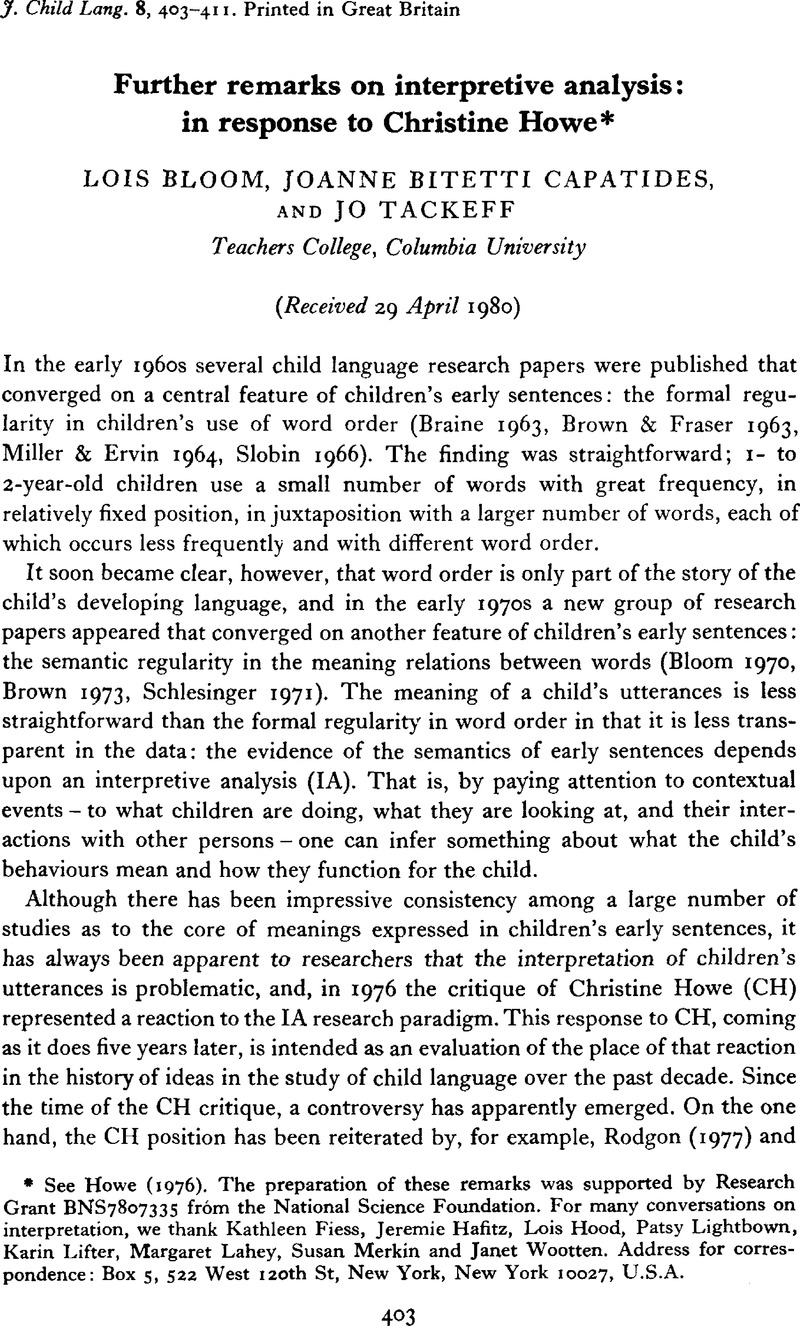Crossref Citations
This article has been cited by the following publications. This list is generated based on data provided by Crossref.
Corrigan, Roberta
1982.
Methodological issues in language acquisition research with very young children.
Developmental Review,
Vol. 2,
Issue. 2,
p.
162.
Bloom, Lois
and
Capatides, Joanne Bitetti
1987.
Sources of meaning in the acquisition of complex syntax: The sample case of causality.
Journal of Experimental Child Psychology,
Vol. 43,
Issue. 1,
p.
112.
Golinkoff, Roberta Michnick
and
Gordon, Laura
1987.
Journal of Child Language,
Vol. 14,
Issue. 1,
p.
179.
Golinkoff, Roberta Michnick
1993.
When is communication a ‘meeting of minds’?.
Journal of Child Language,
Vol. 20,
Issue. 1,
p.
199.
Duchan, Judith Felson
1994.
Two Approaches to Research in Child Language.
Language, Speech, and Hearing Services in Schools,
Vol. 25,
Issue. 1,
p.
48.



